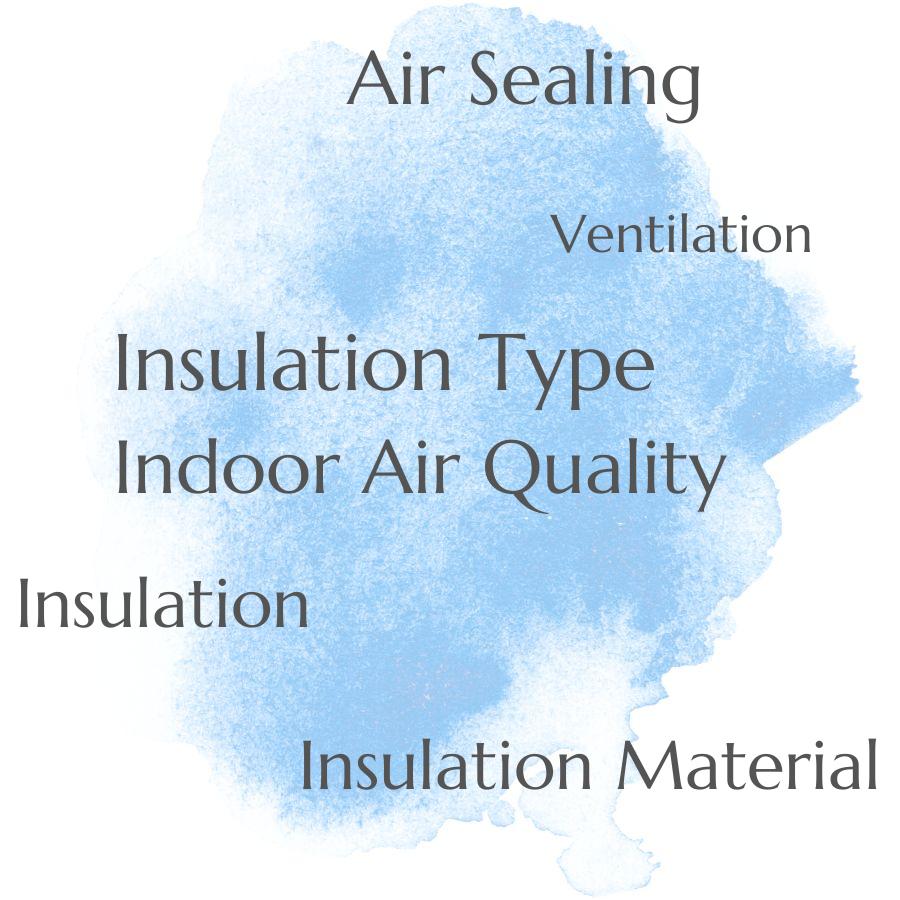Insulation can have a positive effect on indoor air quality by reducing the infiltration of airborne pollutants from outside, as well as helping to maintain consistent temperatures and humidity levels inside the home.
Insulation plays an important role in controlling the indoor air quality of your home or business. It helps to keep out allergens, dust, and other pollutants, while also helping to regulate temperature.
In this blog post, we’ll explore how insulation affects indoor air quality and what you can do to ensure that your home or business has the best possible air quality.
Insulation Type

Different types of insulation can have different effects on the air inside a home or building. For example, fiberglass insulation is often used to reduce heat transfer and keep temperatures more consistent throughout a space, but it can also trap moisture and pollutants in the air if not properly installed or maintained.
On the other hand, spray foam insulation provides superior thermal protection while also allowing for better ventilation and airflow, which helps to improve indoor air quality by reducing allergens and other airborne contaminants. Some types of insulation are designed specifically to reduce noise levels within a space, which can help create a quieter environment that is more conducive to good health.
Insulation Material
It helps to regulate the temperature of a room, reduce noise levels, and prevent moisture from entering the space. Different types of insulation materials have different properties that can affect indoor air quality.
For example, fiberglass insulation is made from glass fibers and can trap dust particles in its fibers, which can lead to poor air quality if not properly maintained. On the other hand, foam insulation is made from polyurethane or polystyrene and does not contain any fibers that could trap dust particles; therefore it has less potential for affecting indoor air quality negatively.
Some types of insulation are treated with chemicals such as formaldehyde or borates which may also contribute to poor indoor air quality if they are released into the environment over time. Therefore it is important to choose an appropriate type of insulation material when considering how it will affect your home’s indoor air quality.
Air Sealing
This is done by sealing any cracks or gaps in walls, ceilings, and floors with caulk or weatherstripping. Air sealing helps to reduce drafts and improve indoor air quality by preventing outdoor pollutants from entering the home.
It also helps to keep conditioned air inside, which can help lower energy bills as less energy is needed for heating and cooling. It can help reduce moisture levels in the home as well as prevent mold growth due to reduced humidity levels.
Ventilation
Proper ventilation helps to reduce the concentration of pollutants and other airborne contaminants, as well as providing fresh air into a space. Insulation plays an important role in ensuring that the ventilation system works effectively.
By preventing heat loss or gain, insulation helps to maintain a consistent temperature within the building, which can help to ensure that the ventilation system operates efficiently and does not become overworked. Insulation can help to prevent drafts from entering through cracks or gaps around windows and doors, further improving indoor air quality by reducing infiltration of outdoor pollutants.
Moisture Control
Insulation helps to regulate the amount of moisture that enters and exits a building, which can have a significant impact on air quality. When insulation is properly installed, it acts as a barrier between the interior and exterior of the building, preventing moisture from entering or leaving too quickly.
This helps to keep humidity levels balanced inside the home, reducing mold growth and other airborne contaminants that can affect air quality. Insulation also helps to reduce energy costs by keeping warm air inside during winter months and cool air inside during summer months.
By controlling moisture levels with insulation, homeowners can enjoy improved indoor air quality while saving money on energy bills at the same time.
Temperature Regulation
It helps to keep the air warm during cold weather and cool during hot weather. By trapping air, insulation acts as a barrier between the outside environment and the interior of a home, preventing extreme temperatures from entering or leaving.
This helps to maintain comfortable temperatures indoors while also reducing energy costs associated with heating and cooling systems. Insulation can help reduce drafts that can cause discomfort and affect indoor air quality by allowing allergens such as dust mites or mold spores to enter through gaps in walls or windows.
Properly installed insulation can help improve indoor air quality by keeping out pollutants from outside sources while maintaining comfortable temperatures indoors.
Pollutants and Allergens Trapped in Insulation Material
Pollutants are substances that are harmful to humans or the environment, such as smoke, dust, and chemicals. Allergens are substances that cause an allergic reaction in some people when they come into contact with them, such as pollen or pet dander.
When these pollutants and allergens become trapped in insulation material, they can be released back into the air over time. This means that even if you take steps to reduce pollution sources inside your home, you may still be exposed to unhealthy levels of pollutants and allergens due to your insulation material.